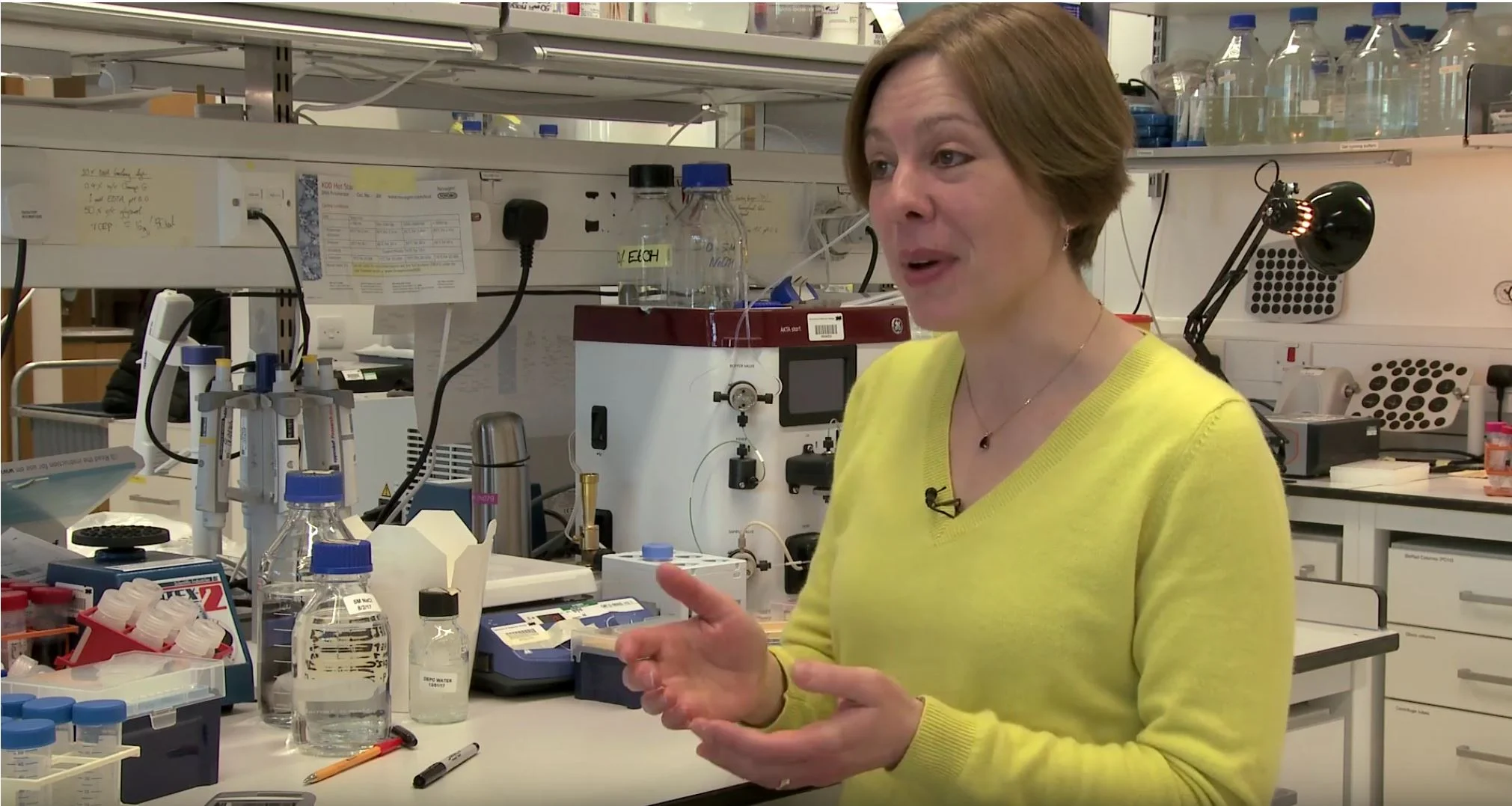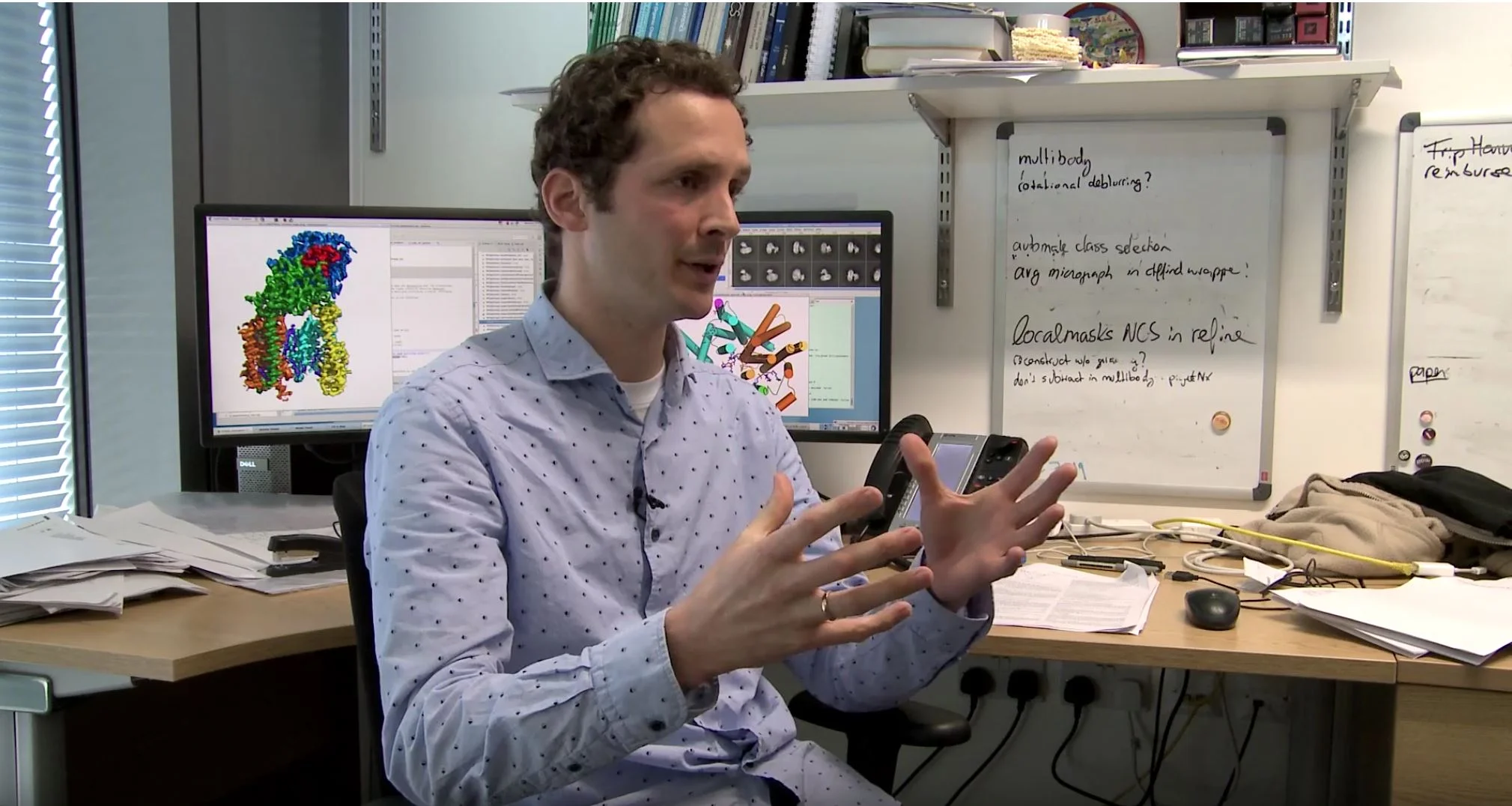RELION Cryo-Electron Microscopy
Cryo-EM enables scientists to visualize proteins at the atomic level, paving the way to accelerated discoveries in cancer research, immunology and neurodegenerative disorders..
Here, we describe the third major release of RELION. CPU-based vector acceleration has been added in addition to GPU support, which provides flexibility in use of resources and avoids memory limitations. Reference-free autopicking with Laplacian-of-Gaussian filtering and execution of jobs from python allows non-interactive processing during acquisition, including 2D-classification, de novo model generation and 3D-classification. Per-particle refinement of CTF parameters and correction of estimated beam tilt provides higher resolution reconstructions when particles are at different heights in the ice, and/or comma-free alignment has not been optimal. Ewald sphere curvature correction improves resolution for large particles. We illustrate these developments with publicly available data sets: together with a Bayesian approach to beam-induced motion correction it leads to resolution improvements of 0.2–0.7 Å compared to previous RELION versions.
Read the RELION 3.0 article
Citation: Jasenko Zivanov, Takanori Nakane, Björn O Forsberg, Dari Kimanius, Wim JH Hagen, Erik Lindahl, Sjors HW Scheres, “New tools for automated high-resolution cryo-EM structure determination in RELION-3,” eLife 2018;7:e42166. doi: 10.7554/eLife.42166
Get the source: RELION-3.0-beta now available.
Visit Sjors' MRC Lab to review his publications, download the latest version of RELION, and gain access to the complete LMB course.
Citation: Sjors H.W. Scheres, "RELION: Implementation of a Bayesian approach to cryo-EM structure determination", Journal of Structural Biology, Volume 180, Issue 3, 2012, Pages 519-530, ISSN 1047-8477, https://doi.org/10.1016/j.jsb.2012.09.006

Watch Erik Lindahl describe the RELION team’s breakthrough results:
Working with Sjors Scheres, Erik Lindahl, Dari Kimanius, Bjœrn Forsberg, & Charles Congdon on RELION cryo-electron microscopy, we delivered 10X faster image reconstruction with Intel® Xeon® Scalable Processor versus prior-gen solution. Results are on par with NVIDIA GPU results and accuracy, yet demonstrate higher scalability, lower power and cost, with the ability to process larger, more scientifically realistic workloads.

Learn about The MRC Laboratory of Molecular Biology and the important contributions to the field of cryo-electron microscopy, including interviews by Lori Passmore, Richard Henderson, and Sjors Scheres.
November 2017 Intel HPC Developers Conference, SC17, Denver
Structural biology is going through a revolution where cryo-electron microscopy (cryo-EM) now determine 3D structures from thousands of noisy images, but it relies on very large computations. This talk presents our work to accelerate the RELION program with x86 SIMD, Intel® Threading Building Blocks, and Intel® Math Kernel Library to provide outstanding performance.
Speakers: Erik Lindahl, Stockholm University; Charles Congdon, Intel Corporation
Watch the presentation
Access the slides
Intel® SSF solutions together with optimized software provide an effective cryo-EM platform that will help scientists achieve scalable results faster, maximize the use of available infrastructure, and enable them to achieve new breakthroughs in 3D protein modeling.
Read the solution brief
Watch the video

Access the complete set of ten lectures from the 2017 MRC Electron Cryo-Microscopy course.

The Nobel Prize in Chemistry 2017 was awarded to Jacques Dubochet, Joachim Frank and Richard Henderson "for developing cryo-electron microscopy for the high-resolution structure determination of biomolecules in solution".
Read the press release
Review scientific background
Review popular science coverage
“Performance improvements of this magnitude change the computing paradigm,” said Lindahl. “Results are available in a fraction of the time. This means the application can now make efficient use of large amounts of system memory, which opens up new avenues of research into larger and more complex molecules.”
Read the article.
Learn More
MRC Lab, https://www2.mrc-lmb.cam.ac.uk/groups/scheres/impact.html
RELION-3.0-beta NOW AVAILABLE, get the source: https://www2.mrc-lmb.cam.ac.uk/relion/
View the LMB course: ftp://ftp.mrc-lmb.cam.ac.uk/pub/scheres/EM-course
Acknowledgements
Sjors Scheres, MRC Laboratory of Molecular Biology
Erik Lindahl, Dari Kimanius, Bjœrn Forsberg, Stockholm University
Intel: Charles Congdon, Joseph Curley, Lisa Smith, Mike Greenfield, Ram Ramanujam
Marketing & Video Production: Kathleen Ellertson, Amber Jackson, Kristine Raabe, Megan Rossman, Radhika Anand
Editorial: Rick D Johnson, Ed Pitkin





